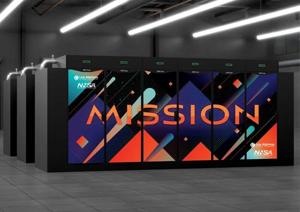
Los Alamos National Laboratory (LANL) has announced plans to introduce two new supercomputers, named Mission and Vision, scheduled to be operational in 2027. These advanced systems will enhance capabilities in modeling and simulation to support national security science, scientific research, and artificial intelligence applications across the National Nuclear Security Administration (NNSA) complex.
The announcement was made in a news release on Tuesday, highlighting a collaboration with technology giants Hewlett Packard Enterprise (HPE) and NVIDIA. HPE will serve as the prime contractor in the initiative, utilizing its recently unveiled Cray Supercomputing GX5000 platform to construct both supercomputers.
Brandon Williams, Administrator of NNSA, emphasized the significance of these developments, stating, “NNSA has a proud history of applying science and technology to national security challenges. The next generation of NNSA supercomputers marks a significant milestone in ensuring America’s leadership in the global AI race.” He noted that the systems will incorporate cutting-edge capabilities, which are crucial for effective and reliable security.
Funding for the supercomputers will be contingent on “anticipated future funding,” as stated in the release. This financial backing underscores the commitment to advancing technological resources in support of national security.
Enhanced Computational Power for Diverse Applications
When operational, Mission will replace LANL’s current Crossroads computing resource and will be dedicated to classified work. The system is designed to tackle large and complex simulations, with the capability to run multiple simulations concurrently. Such enhancements aim to bolster analysis and predictive modeling essential for national security.
In contrast, Vision will support unclassified projects, building upon the existing Venado supercomputer, which was installed in 2024. This system will accelerate research in various fields, including national security, materials and nuclear science, energy modeling, and biomedical research. Both computers will feature similar AI capabilities, allowing them to manage multiple workloads and user groups simultaneously.
Thom Mason, Director of LANL, remarked on the importance of these systems, stating, “The Mission and Vision systems represent a significant investment in our national security science and basic science capabilities. HPE and NVIDIA are experienced partners in this space, capable of delivering technology that offers the capabilities Los Alamos needs to fulfill its essential role, especially as we lead the way in integrating AI into the modeling and simulation at the heart of our mission.”
As the project progresses, more details regarding timelines and completion will be revealed. The introduction of Mission and Vision signifies a forward-looking approach to leveraging supercomputing technology in the evolving landscape of artificial intelligence and national security.






